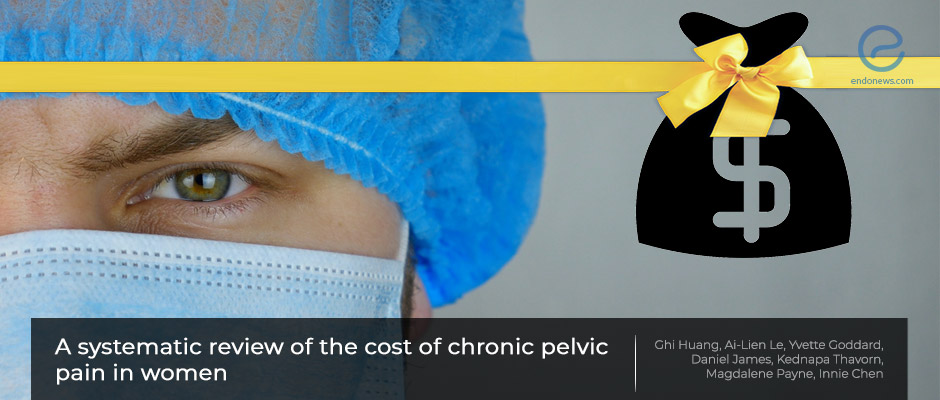The Cost of Healthcare for Chronic Pelvic Pain
Oct 29, 2021
A new literature review analyzed the cost of healthcare for the treatment of chronic pelvic pain.
Key Points
Highlights:
- Chronic pelvic pain causes a considerable economic burden on women and healthcare systems across the world with indirect costs contributing a significant portion of the burden.
Importance:
- This finding underscores the importance of promptly treating conditions like endometriosis which causes chronic pelvic pain.
What's done here:
- Researchers conducted a systemic review of all studies about the cost of chronic pelvic pain in English and French published between 1990 and 2021.
- Among 67 papers screened in full-text, 13 studies that focused on cost studies for pelvic pain, dysmenorrhea, dyspareunia, endometriosis with pain, painful bladder syndrome were included in the final analysis.
Key results:
- The healthcare cost of pelvic pain was between 1,367 USD and 7,043 USD per woman per year.
- The prescription costs ranged between 193 USD and 2,457 USD per woman per year.
- Indirect costs ranged between 4,216 USD and 12,789 USD per woman per year.
- Combined costs ranged between 1,820 USD and 20,898 USD per woman per year.
Limitations:
- The differences in study design, types of costs, and methods of reporting limited the ability to compare findings between studies included in this review.
- Many studies did not include a control group so it is not possible to attribute the reported costs to chronic pelvic pain only.
- The cost estimates are likely understated as they did not take into account factors such as absenteeism, productivity loss, and opioid use.
Lay Summary
The healthcare costs of pelvic pain range between 1,367 USD and 7,043 USD per woman per year, found a new study published in the Journal of Obstetrics and Gynaecology Canada.
The study also reported that prescription costs ranged between 193 USD and 2,457 USD and indirect costs ranged between 4,216 USD and 12,789 USD per woman per year. Combined costs ranged between 1,820 USD and 20,898 USD.
When the researchers analyzed the yearly costs of chronic pelvic pain by country, they found that this varied greatly with an estimated yearly cost of 2.8 billion USD per year in the US, 191,680 JPY (1,69 USD) to 246,488 JPY (2,174 USD) per woman per year in Japan, and between 16,970 USD and 20,898 USD per woman per year in Australia.
Based on these findings, the authors concluded that chronic pelvic pain represents a considerable economic burden on women and healthcare systems throughout the world and that indirect costs contribute a significant portion of total costs.
For the study, a team of researchers led by Innie Chen MD, MPH, FRCSC from the University of Ottawa in Canada searched electronic databases for studies about the cost of chronic pelvic pain published between 1990 and January 2021. They only included studies in English and French in their study.
Their findings were based on 13 studies that estimated hospital cost or health system cost for pelvic pain, painful periods, painful intercourse, endometriosis with pain, interstitial cystitis, or painful bladder syndrome.
“The literature and other available data suggest that [chronic pelvic pain places a considerable economic burden on women and society,” the researchers wrote. They added that the scarcity of articles about costs related to chronic pelvic pain in the literature underscores the lack of research in this area. More work is necessary to clarify the definition of chronic pelvic pain and the costs associated with it to ensure women are advocated about it and offered the right treatment, they said.
Research Source: https://pubmed.ncbi.nlm.nih.gov/34587539/
chronic pelvic pain healthcare cost

